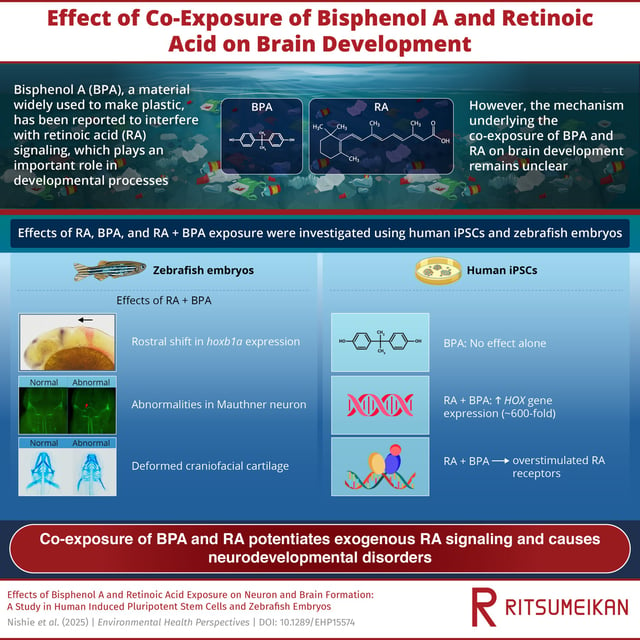Overview
- Researchers found that BPA alone had no effect but co-exposure with retinoic acid amplified RA signaling and dysregulated HOX gene clusters, causing abnormal brain and facial development.
- The team used human induced pluripotent stem cells and zebrafish embryos to model early neurodevelopment and observe gene expression and morphological changes under BPA and RA co-exposure.
- Treatment with RA receptor blockers mitigated the combined exposure effects, confirming that BPA potentiates toxicity through RA signaling rather than estrogen receptors.
- Overactivation of RA-responsive genes in laboratory models suggests potential environmental links to disorders such as autism spectrum disorder and attention deficit hyperactivity disorder.
- The presence of BPA in plastics and receipts alongside RA-like compounds in drinking water prompts calls for integrated regulatory frameworks and stricter chemical safety standards.
